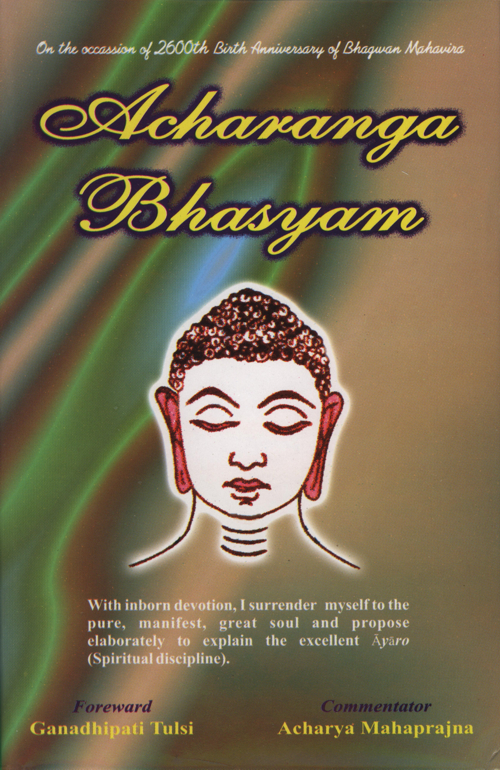1.151 aṇagārā motti ege pavayamāṇā.
Some people style themselves as homeless mendicants.Bhāṣyaṃ Sūtras 150,151
See Sūtras 17,18.
1.152 jamiṇaṃ virūvarūvehiṃ satthehiṃ vāukamma-samāraṃbheṇaṃ vāusatthaṃ saṃmāraṃbhamāṇe aṇṇe vaṇegarūve pāṇe vihiṃsati.
They indulge in violent actions to air-bodied beings with various weapons, which involve destruction of various other classes of beings.
Bhāṣyaṃ Sūtra 152
In the Niryukti, the following are mentioned as the weapons that cause injury to the air-bodied beings:
- The generator of air current, viz. fan, palm fan, winnowing basket,chowrie, leaf, corner of a garment.
- Stationing oneself: It means standing against the air current, when one is perspiring.
- Fragrance of sandalwood and the fragrant root of the plant Andropogon muricatus, etc.
- Fire: Its flame and heat.
- Homogeneous weapon: The opposites viz. the cold and the hot air are the weapons mutually.[1]
It is said in the Sthānāṅga that all the five classes of immobile beings may be alive or dead.[2] There five kinds of non-sentient air-bodies are also mentioned:
Trampled: Air rising up when trampled under foot and the like. Blown out: Air blown out by bellows, etc. Squeezed: The air rising up while squeezing wet cloth. Bodily air: Belching, exhaling, etc. Coagulation: Flow of air caused by fanning etc.[3]In the Niśῑtha bhāṣya, and the Cūrṇi the air-bodies are propounded as weapons to one another.[4] In the Bṛhatkalpabhāṣya, the live or dead nature of air-bodies is said to be by virtue of their being at specific place and time.[5] There is thus numerous descriptions about the weapons and live or dead air-bodies, which deserve patient and prolonged studies.
1.153 tattha khalu bhagavayā pariṇṇā paveiyā.On this subject the Lord has propounded the principle of comprehension and abandonment.
1.154 imassa ceva jῑviyassa, parivaṃdaṇa-māṇaṇa-pūyaṇāe, jāῑ-maraṇa-moyaṇe, dukkhapaḍighāyaheuṃ.
Longing for survival; praise, reverence and adoration; birth and death, emancipation; and elimination of physical and mental suffering.
1.155 se sayameva vāu-satthaṃ samāraṃbhati, aṇṇehiṃ vā vāu-satthaṃ samāraṃbhāveti, aṇṇe vā vāu-satthaṃ samāraṃbhaṃte samaṇujjāṇai.
He himself indulges in killing the air-bodied beings or instigates others to do so or he approves of such killings by others.
1.156 taṃ se ahiyāe, taṃ se abohῑe.
Such violence is for his harm, is for his non-enlightenment.
1.157 se taṃ saṃbujjhamāṇe, āyāṇῑyaṃ samuṭṭhāe.
He (the ascetic) comprehends the result of violence and applies himself to the practice of self-restraint.
1.158 soccā bhagavao aṇagārāṇaṃ vā aṃtie ihamegesiṃ naya bhavai - esa khalu gaṃthe, esa khalu mohe, esa khalu māre, esa khalu ṇirae.
Hearing from the Jina or other ascetics, some people come to know: such violence is indeed a knot, it is delusion, is death, is hell.
1.159 icchatthaṃ gaḍhie loe.
Nevertheless, the people entrapped in the pursuit of pleasure (indulge in violence to air-bodied beings).
1.160 jamiṇaṃ virūvarūvehiṃ satthehiṃ vāukamma-samāraṃbheṇaṃ vāu-satthaṃ samāraṃbhamāṇe aṇṇe vaṇegarūve pāṇe vihiṃsati.
They indulge in violent actions to air-bodied beings with various weapons, which involve destruction of various other classes of beings.
Bhāṣyaṃ Sūtras 153-160See Sūtras 20-30.
 Acharya Mahaprajna
Acharya Mahaprajna

